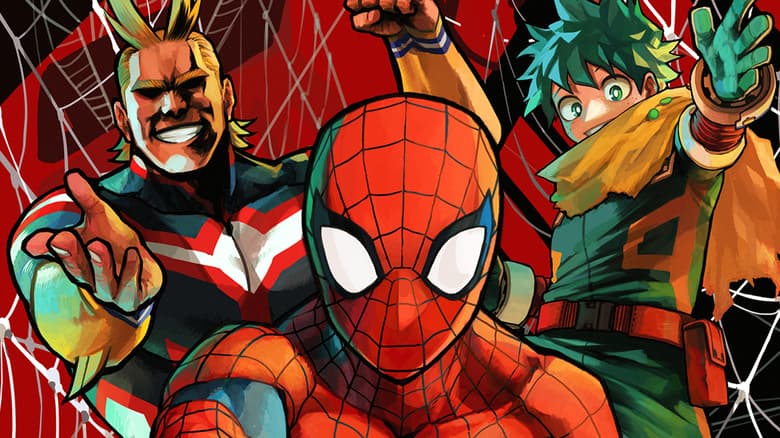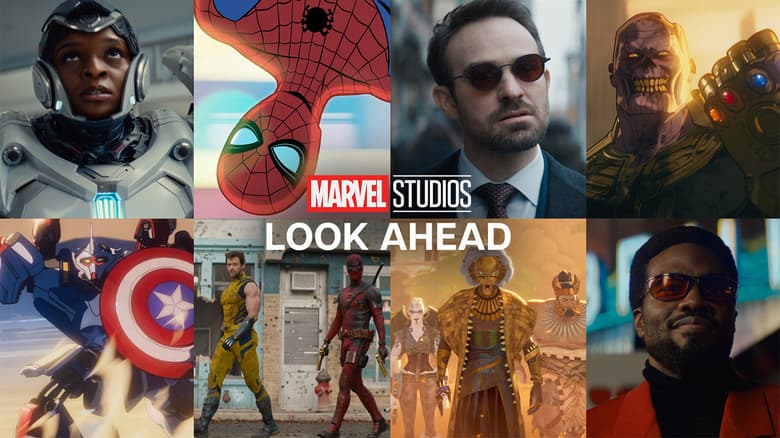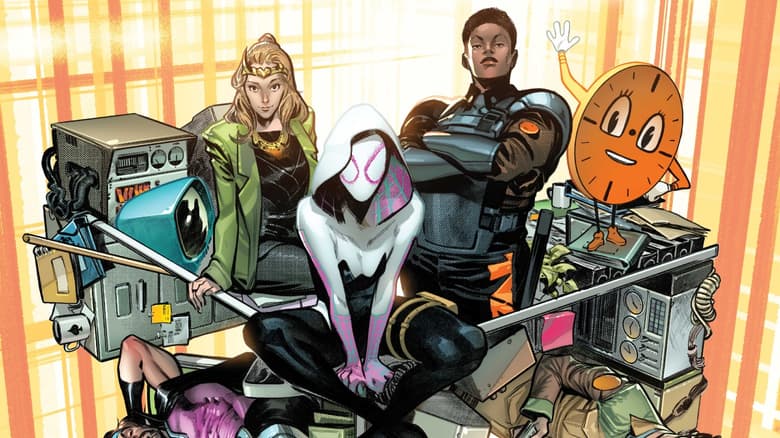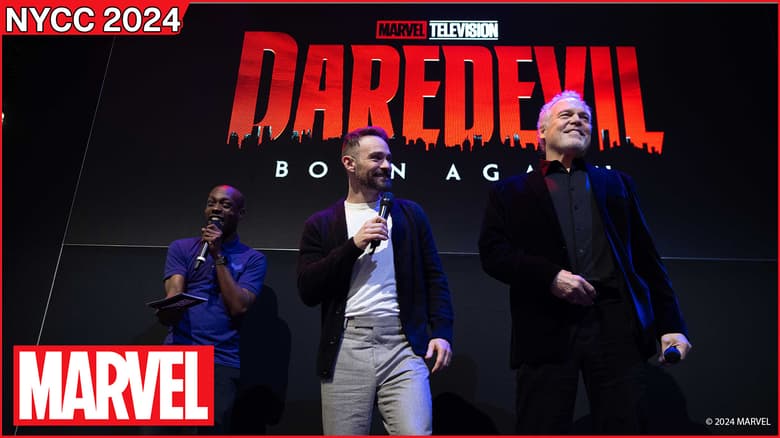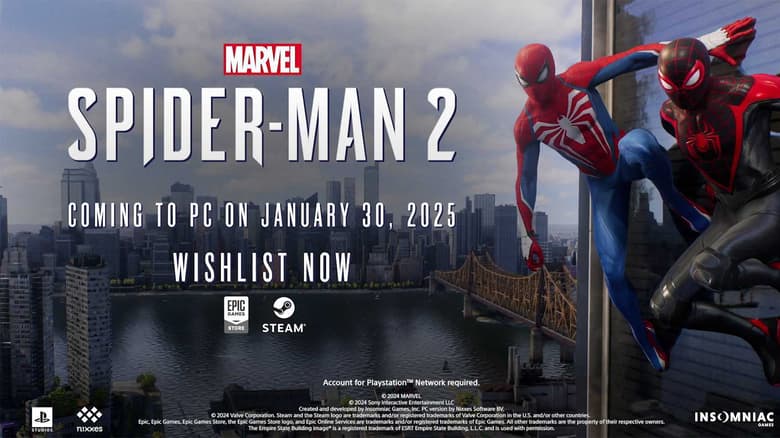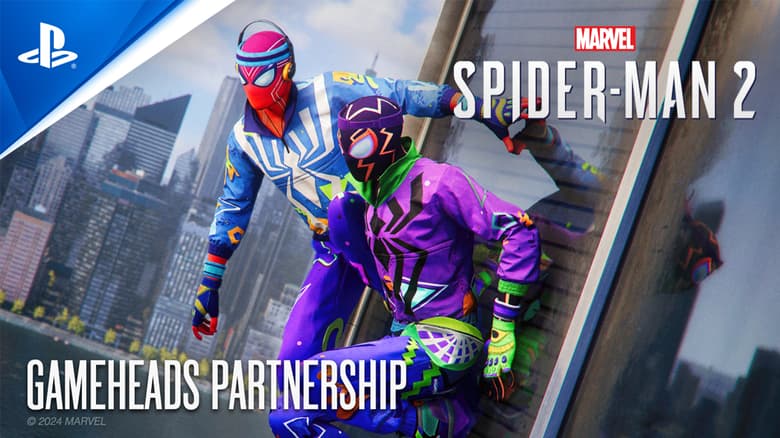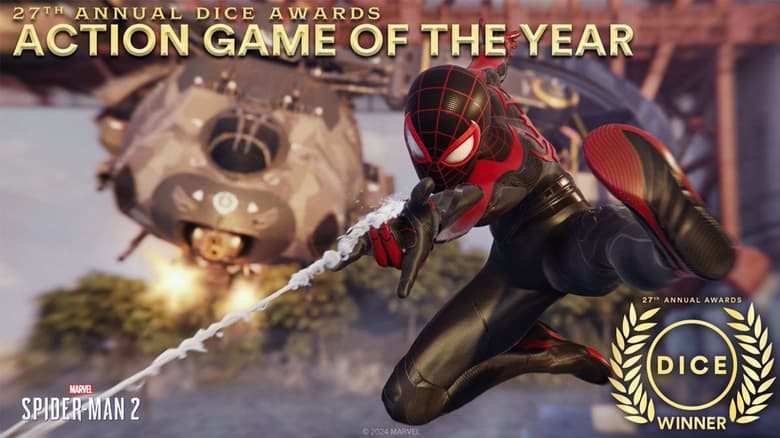Marvel Games VP Bill Rosemann Answers Your Burning 'Marvel's Spider-Man 2' Questions
Marvel Games VP and Creative Director Bill Rosemann breaks down those two 'Marvel's Spider-Man 2' post-credits scenes, the joys of collaboration, and so much more.
Be greater. Together. In Marvel's Spider-Man 2, our two friendly neighborhood Spider-Men joined forces to take down such villains as Venom, Kraven the Hunter, Sandman, and more—but at a great cost. While Peter Parker and Miles Morales successfully saved Marvel's New York once more, their sacrifices led to shocking consequences, which have left fans buzzing ever since.
Speaking to Marvel.com, Marvel Games VP and Creative Director Bill Rosemann dove into some of the most shocking elements of Marvel's Spider-Man 2. He addressed the long-term planning behind some of these major story beats, as well as the surprise debut of Cindy Moon. He also shared the joy of collaborating with Insomniac Games and Sony Interactive Entertainment, what made him enjoy Kraven's adaptation in particular, and so much more.
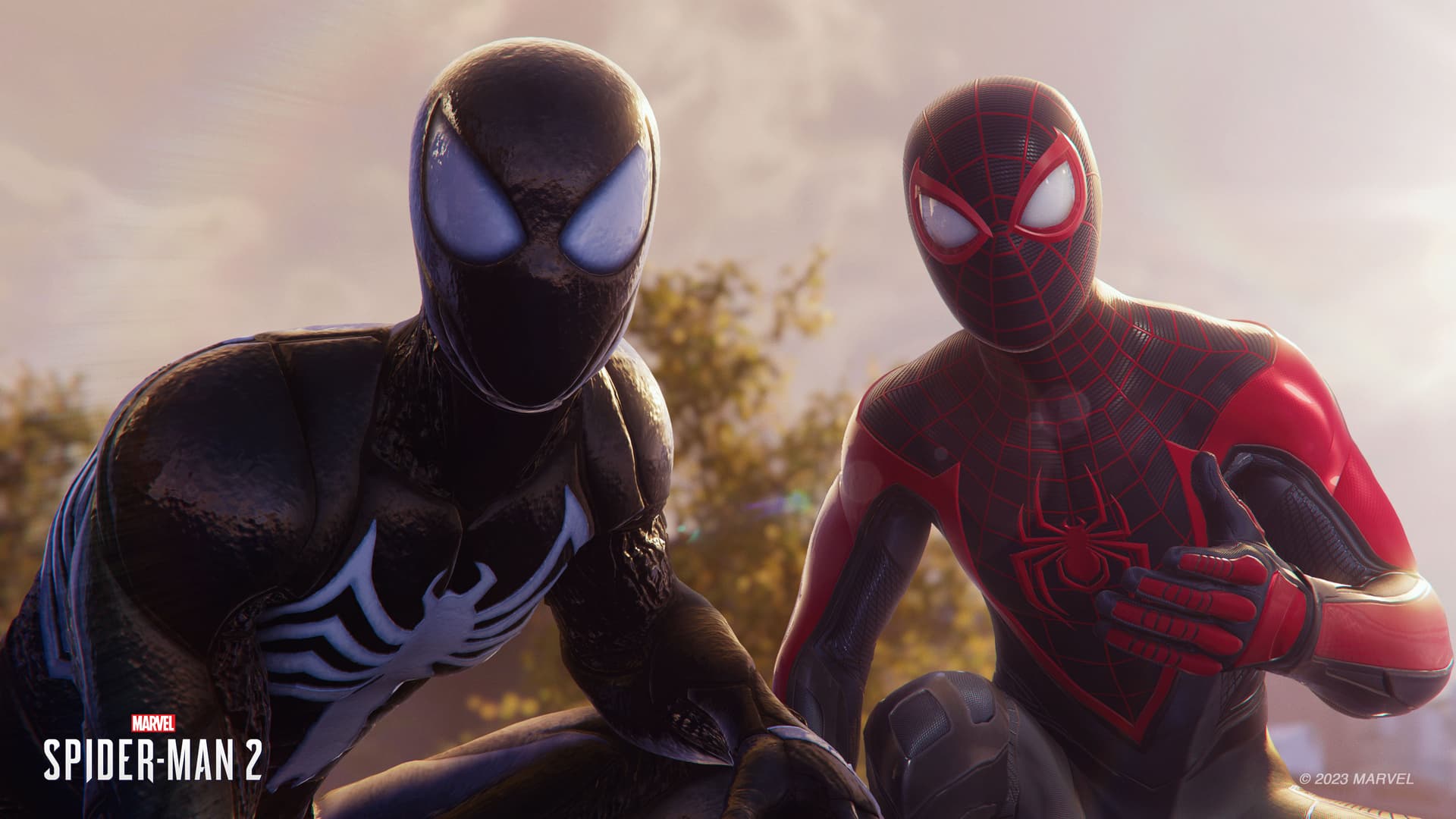
MARVEL.COM: Marvel's Spider-Man was a collaboration between a couple of teams, including Marvel Games, Insomniac Games, and Sony Interactive Entertainment. I'd love to hear a little about this process and what those teams brought to the table.
BILL ROSEMANN: I'm glad you brought up collaboration, because as with everything at Marvel, it's all collaboration. Every single thing we do at Marvel—comics, videos, movies, games—it's all a team effort. You can't make a comic book with just one person, unless they happen to know how to color and letter and ink and pencil and write. Then, behind the scenes, editorial adds so much the creative experience when it's done the right way.
So that's in our DNA: collaboration. Not to mention marketing and publishing and social—it's all of us together. So, from the very first discussions, that is something that our friends at Insomniac and PlayStation and everyone here at Marvel Games talked about and understood is that we're going to do this together. On our side, I don't know if we made a promise, but we explained, "Hey, the way we are brought up and taught here is we want to connect the best creators with the characters they love and that we feel are right for them. Then we want to do everything in our power to help them deliver their vision. We all have to work together."
This era of Marvel Games, that's a foundational word: collaboration. We don't just say, "Okay, sign a deal and then we'll see you in five years and you can show us your game." No one wants that on either side. So we are here to help in any way. On our side of the collaboration, it's all about listening and asking, "What do you want to accomplish and what's your vision and what's your goals? What do you want to bring to the experience?" And then we react with, "Well, what do you need? Do you need reference? Can we supply you with any images? Panels, covers, recommended reading lists? Do we need to just back off for a bit and let you cook?"
For some of us, it's almost 24/7, because we're all so excited and we're all fans. So [Insomniac Games Senior Creative Director] Bryan Intihar, Eric Monacelli, and myself are texting each other on the weekends, "Did you read this? Did you see this? Oh, check this out!" So we are here as sounding boards. We are here just sharing cool stuff. We give feedback. Of course, our whole team, we're playing the game. We are together looking at everything, the cinematics, the music, you name it. It's all of us working together. I think that's a winning formula.
Here's three groups: Insomniac, PlayStation, Marvel. When you have that collaborative spirit and we're all trying to help each other and let each other do what they do best, but then always collaborate to deliver what we hope the fans will love. Then it showed! Once you have that love and understanding of the character and the aligned goals, you feel it. It's on the screen.
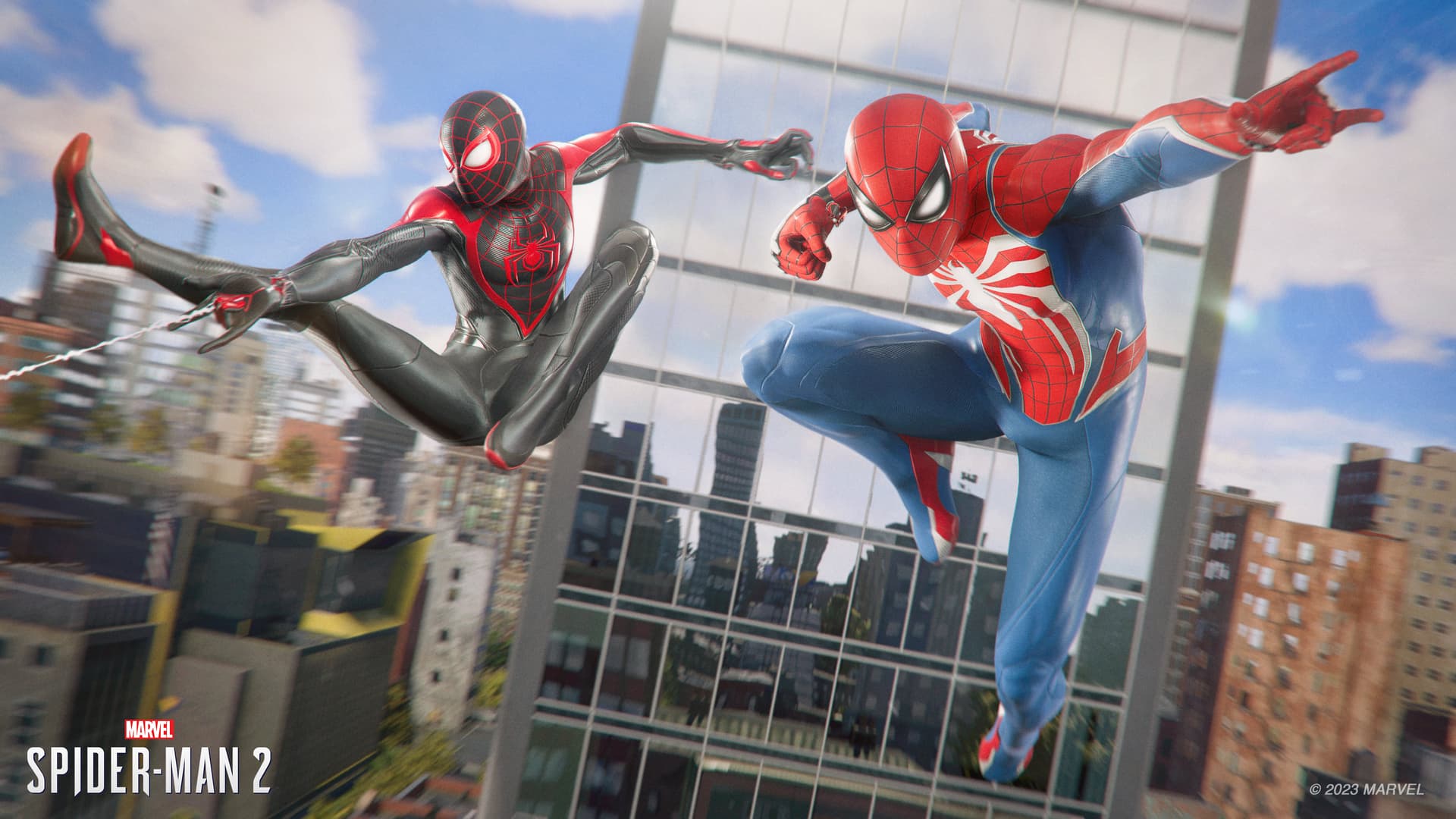
MARVEL.COM: It's one thing to see some of these elements—like the Anti-Venom suit—in comics, but another entirely to see them in action in a video game. How did you settle on which parts of the comics to include?
BILL ROSEMANN: All divisions of Marvel are given that freedom so that we're not held by each other's continuity or trying to make things fit in between comics or movies or whatever, because we all have for respect what the medium is and the time it takes to create it and the different audiences. Now, there is consistency. Across Marvel Games, or if you go from a game to a movie or a comic, it all feels like the Marvel Universe and we stay in contact.
Part of the magic is we say to our collaborators, "Here's everything Spider-Man. Here's it all. Let's talk about it. You're doing a Venom story. Let's go back and let's go back to where the suit came from, when Peter discovered it was a lie, and how it bonded with Eddie. Here's all the stories. Let's just pick things, no matter what era it's from. It can be from the 80s or it can be from this week's comics. How can we mix it together, and take things from all eras and pick the stuff that—again with Insomniac—excites you?"
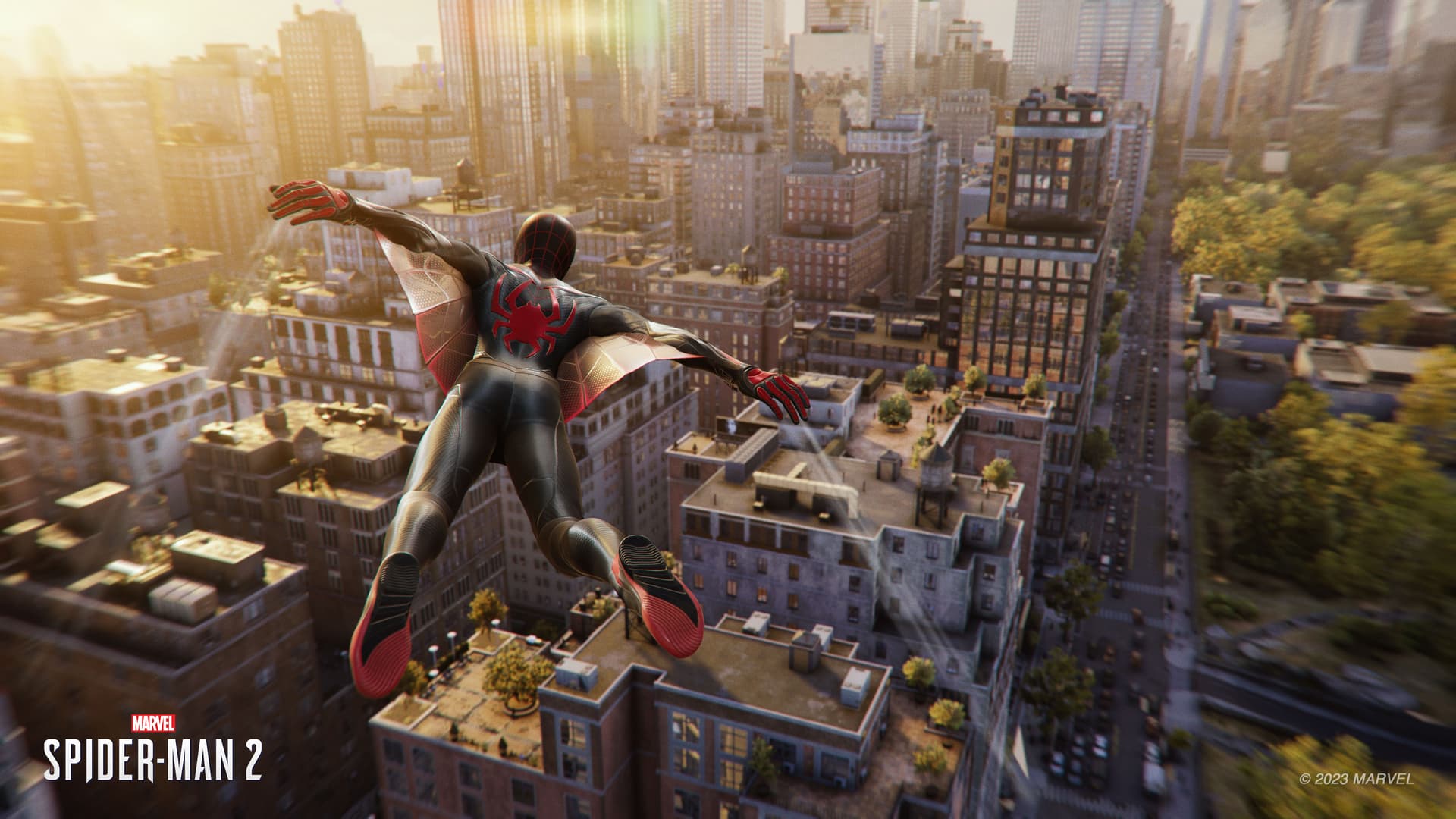
MARVEL.COM: When we last spoke, we discussed Marvel's Spider-Man's approach to adaptations. Now that the game is out in the world, let's really dig into Harry Osborn's arc in particular. How did Harry end up becoming Venom?
BILL ROSEMANN: Those seeds and the idea came up during the creation of the first game, and it was pretty late in it. We were just talking about Otto [Octavius] and Norman [Osborn] and their relationship, and we're always talking about motivation and goals: why are they doing this? There are initial goals that heroes and villains have, and then there's an underlying, driving motivation, and then under that is even a deeper motivation of, "What happened in their back story when they were younger or growing up? Do they have a feeling of, whatever, 'I want to protect people' or 'I feel inferior' or whatever it is?" It's those bubbling things, and they bubble up, bubble up, bubble up.
So with Norman, we were talking about, "Why is he doing all these things?" He and Otto, in the first game, worked together and they accidentally unleashed Mister Negative's powers. So the question is, "Why were they doing this?" At Marvel—and something we talked with Insomniac and PlayStation about storytelling—we want to spend as much time as possible talking about the villains, the antagonist—as much as talking about the heroes we meet.
The goal is we don't want to agree with exactly what they're doing, but we should understand what's motivating them, so at least I understand where they're coming from. I may say, "I understand what's driving you, but this probably isn't the way to do it." So with Norman, it wasn't just, "I'm evil! I'm going to mess with people! I'm going to create things!" It's like, "Okay, what's the larger goal?"
We had a discussion and we already had the Harry story in the first game: Harry is leaving messages for Peter. He's in Europe. Then we said, "What if he's not in Europe? What if, at the end, our stinger is Norman walks into this back room and there's Harry and he's sick. He's not in Europe. He's sick. And that's why this father is doing all these things." He wants to help his child, his son. That's relatable. Then it was Bryan Intihar who later called me up... and said, "What if, in the pod that Harry is in, we see some black goo?" And I said, "What do you mean? Is that the symbiote?" He was like, "It could be!" And we had no idea: are we going to continue this story in the second game and is it going to happen? It was just a plant.
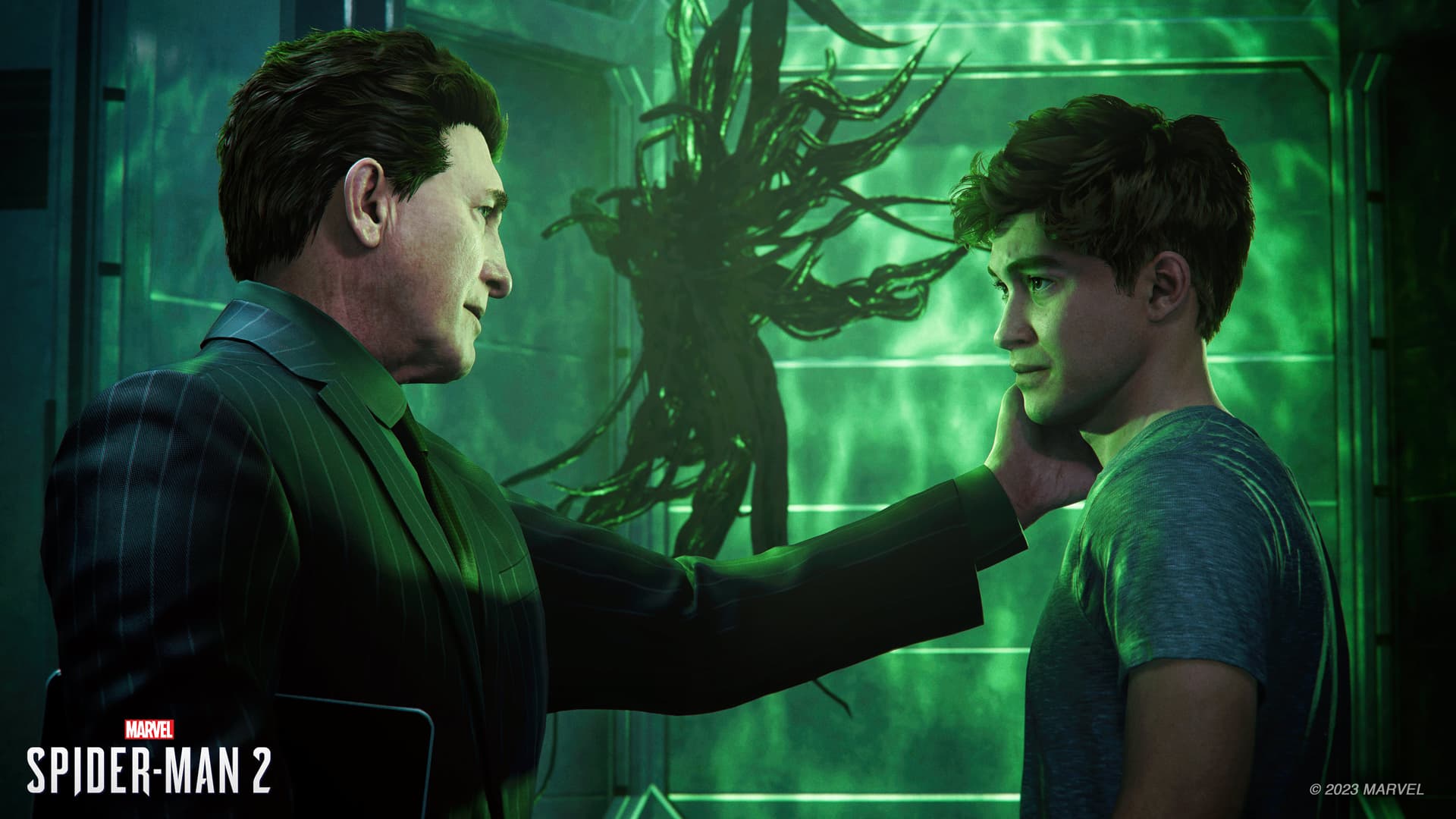
So then, as we got going up, it was like, "Yeah, we're going to tell the Venom story," and because we had teased it up, it's like, "Okay, it's going to be Harry." We talked about why and we talked about, if you're going to tell a story with the character—again, it's all about, "Let's go back. Let's study the core. Let's talk about the three to four things that are very important about a character, and if you take some of them away or change them, do you break the character or do we say, 'Well, we might as well do another character,'" right?
With Venom, over the course the story, the symbiote has different hosts and has had different names with different hosts, but the goal was, "We want it to be an emotional story about the player." It all goes back to the player and the player experience. Marvel fans love that mix of soap opera and Super Hero. That's part of the Marvel magic. We could have a challenge of, "Well, if we want people to care about Venom, we better introduce Eddie and make you care about Eddie," and we just didn't have that room and that time. The decision was, "Hey, if it's Harry, what does that mean for Norman? What does that mean for Peter? What does that mean for MJ? And then also for Miles? Oh my gosh, here's this thing we're fighting, but it's Peter's best friend!"
That's always the best Spider-Man stories, as we discussed, when his civilian life collides with the Super Hero life. It was unexpected. We never want to do twists just for twist's sake. It should come up organically in discussing the story. If a twist happens that feels right, that aligns with our goals, then we do it, but we never say, "Well, here's the three twists we're going to do, and we'll figure out what the story beats are." That's when you come up with bad decisions. But if it comes up naturally and we say, "Oh, could we do that? Let's talk about that."
So it was all about the player and the player experience and all those emotions that it would bring up in Peter and Harry and that kind of classic Spider-Man conundrum of, "I need to defeat this villain, but they can't die. It's someone I know! I feel bad." It dovetails nicely with the Lizard being in the story. In any other Super Hero before Spider-Man, it would have been like, "Here's this guy and he turns into the Lizard and I'll defeat him." The twist that the creators brought to Spider-Man is it's not just someone who turning to Lizard; it's my professor who I really like and he has a tragic back story and now I need to figure out how to defeat the Lizard, but I don't want to hurt Curt Connors. It's just delicious drama!
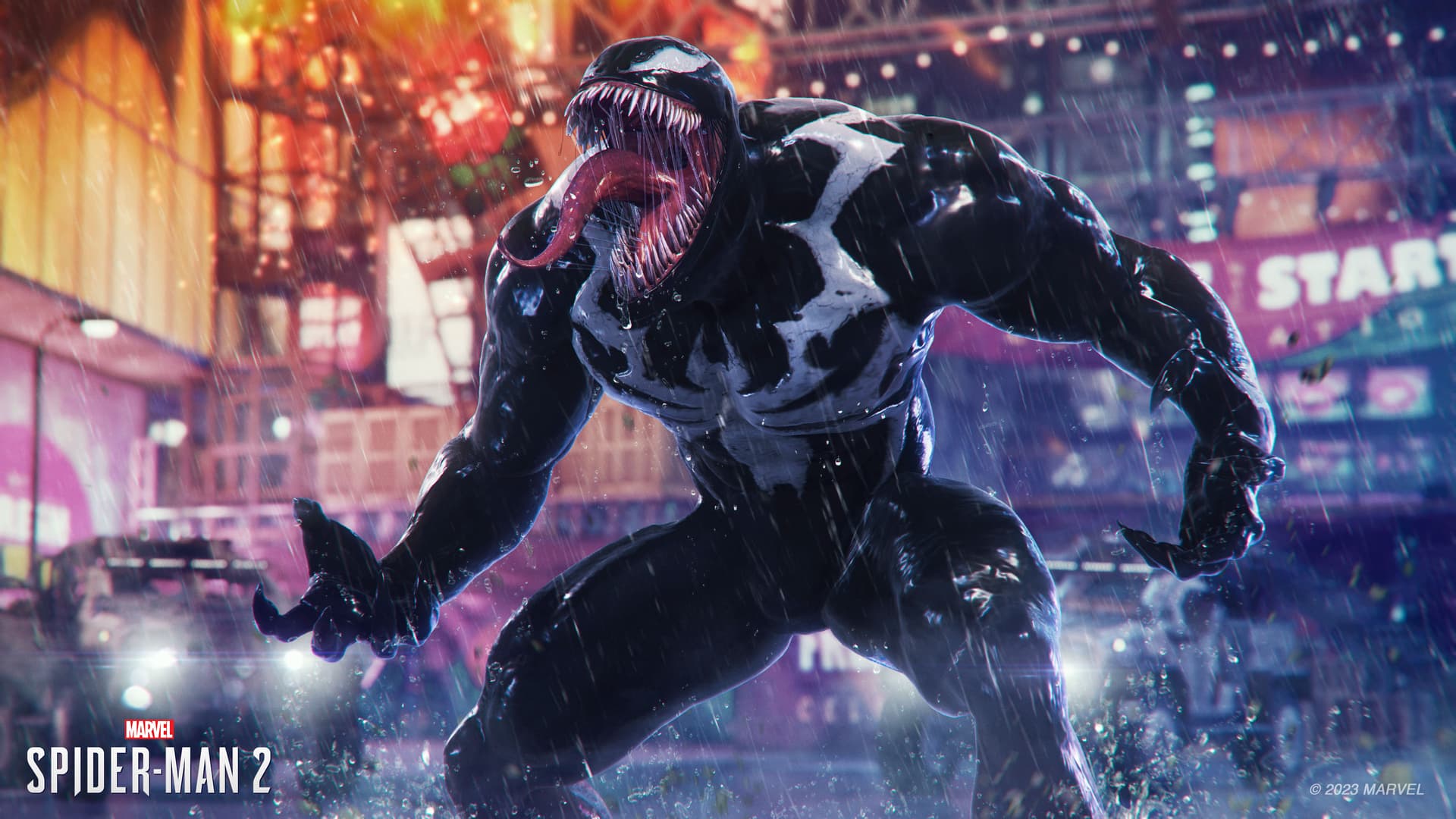
MARVEL.COM: As you mentioned, Norman's arc has been seeded over the past three games. What excites you the most about the slow burn of this approach?
BILL ROSEMANN: Everyone who worked on the game was very appreciative that we are either being given or maybe even earning this long runway of storytelling, which was part of the original idea. This kind of behind-the-scenes baseball, but it's important that the players know and that everyone out there knows this. Back to the collaboration, part of the goal when we make games or get into a discussion with individuals we want to work with, the plan is always long term.
That all comes from Marvel histories. You want to work with a writer or artist or whoever—whoever the artist is that we're working with—we don't just want it to be one and done. We want to have a relationship and... we want you to have a long career, if you want it! A long career here at Marvel to tell your stories. Marvel fans love stories. Again, go back to the comics. It's not perfect, but it's all one story. The more you read or experience, the more rewarding it is. So eventually when we have payoff, it feels so good, because you are part of the story. You are the one experiencing it; you are making connections. So you, as the player or reader or audience, are part of that long term storytelling.
Number one, we're grateful to be even given that opportunity. Number two, it's just so fun to plant seeds. Again, that's part of the collaboration of, "Okay, Spider-Man may have 100 great villains, but let's not try and jam them all into one game. Let's be thoughtful about it. Let's select opponents that somehow connect to the overall story or themes or combinations. What challenges will have more meaning to our heroes over the course of time, when it comes to their journey as heroes and gaining abilities? How can we show them growing?"
We know Marvel audiences are as smart as or smarter than we are. We always keep that in mind, and so we know anything we do or don't do will be picked up on, and we don't want to mislead anyone. That comes from a classic storytelling idea of, "If you put a gun or a knife on the mantle of a fireplace in Act I, by either Act II or Act III, someone better grab and use that thing!" But we've got to plan it first. You have to play fair with the audience. We got to set it up, let the audience see that, maybe forget about it for a while, and then when it comes back: "Oh yeah! That was seeded back then!"
Yeah, we love it. We love long term. We love long-term burns. Again, that goes back to the DNA of Marvel and Spider-Man. There are characters who, over the years, eventually either became a villain or became a hero, but it's a long burn. It's just fun. It's fun as storytellers, and it's fun as the audience.
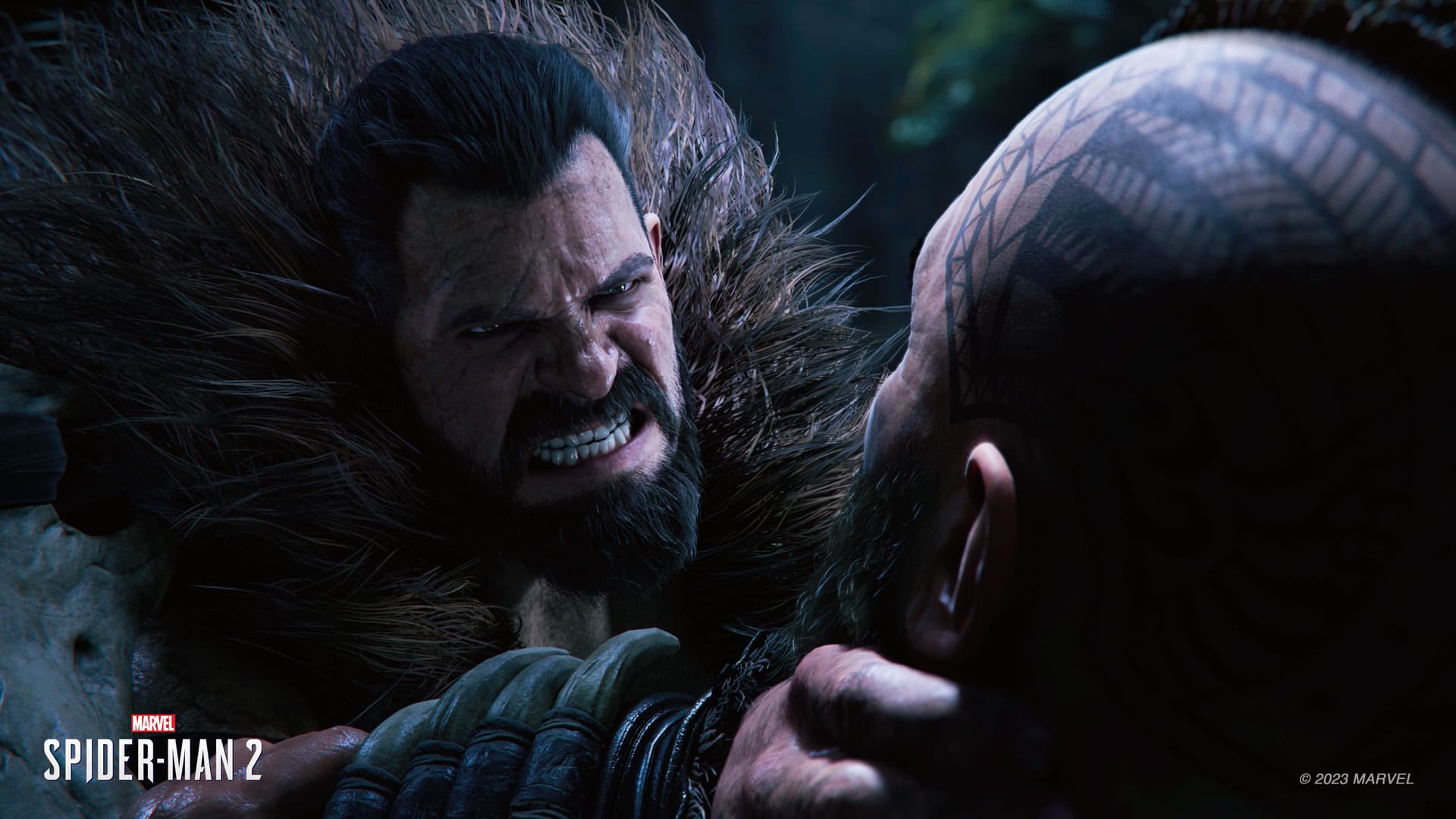
MARVEL.COM: While we're on the subject of villains, I continue to be astounded by the sheer amount of them that appeared in the game without feeling overcrowded, even as the game sets up new antagonists. Who ended up being your favorite villain from Marvel's Spider-Man 2, and why?
BILL ROSEMANN: Right away, Venom was executed so well—everything from story decisions to gameplay to tech to the amazing voice work by Tony [Todd]. He's a standout. He's a scene stealer.
That said, I also really love how Insomniac embraced Kraven. Part of what makes Spider-Man so beloved is his villains. His rogues' gallery, as you say. Some may say it's the best rogues' gallery. It's up for debate. But what's important is we have to respect it and utilize it and deliver all of those expectations or wish fulfillment or the power fantasy that players will have. They want to fight these foes.
When we have the opportunity to elevate someone, to spotlight someone and elevate them, we embrace it. So in Marvel's Spider-Man, a lot of people didn't know who or what a Mister Negative was. He was a rather recent addition to Spider-Man's rogues' gallery. When you take a step back and go all the way to the 60s, he's kind of recent, and many people have no idea who or what he is. But we collectively saw the potential there, and there are some characters where we say, "They're just waiting for the platform. They're just waiting for the right creators to come along and show the world why they're cool."
So Kraven was someone where that's a character over the years some people may treat as a joke. It's easy to mock something that may have been invented decades ago. That's easy. We love it at Marvel when creators come in—say, going way back, looking at Frank Miller and what Frank did with Daredevil and his world and took characters like Bullseye and Kingpin and really rethought them, but stayed true to their core and showed the world why they're cool. That's hard. So we say, with these villains, a lot of them, it's easy to mock. What's difficult is to go back, respect the creators, respect why these villains have been so popular for so long and get to the core of them.
For people who have read comics for a long time, many of them will say, "Man, Kraven is a badass. Read these five stories!" So that was our challenge. To some people, Kraven is their favorite villain. It may just be one story that made them feel that way. So what can we do to, again, respect the DNA, but don't be afraid to mix it up and show the world, "Here's why Kraven is so awesome and scary." He wants to hunt! Like, what? He doesn't want to rob banks; he wants to hunt! For many reasons.
So, yeah, love Venom. Scene stealer. Star of the show. But I love that Insomniac—working with the tech of the PlayStation—can really elevate and showcase more of Spider-Man's rogues' gallery.
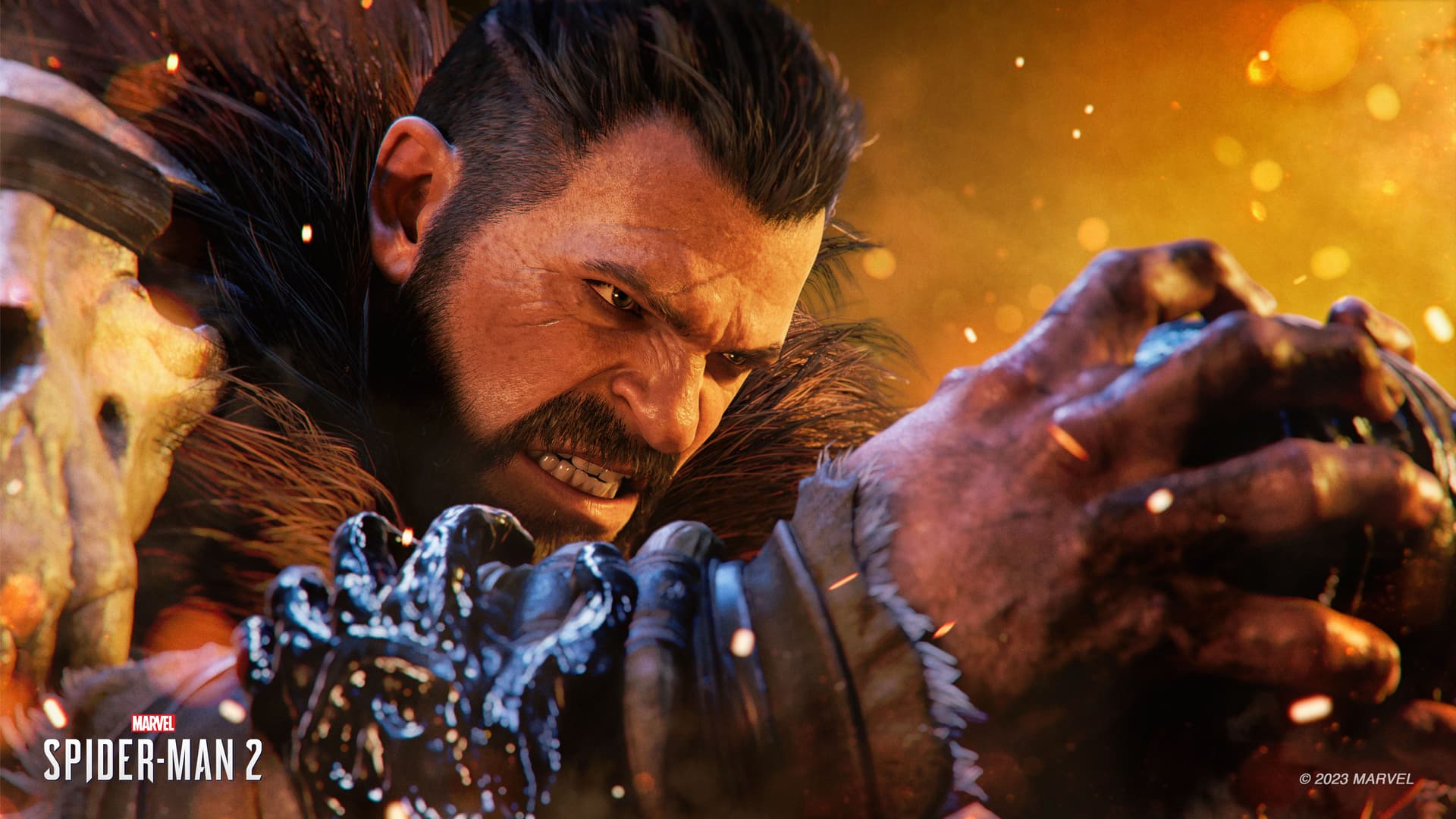
MARVEL.COM: I think the thing that excited me most was seeing Cindy Moon pop up in that post-credits scene. What kind of opportunities does that open up for this franchise?
BILL ROSEMANN: When choosing characters, there's many, many things Insomniac could have done with that last scene, but they had an idea and a vision, just like with the post-credits scenes of the first game. Anything could happen! But whether it does happen with those characters, we think, "Okay, if you don't know who the character is, it's just, 'Oh, Cindy Moon! That's an interesting name! Okay.'" But then, if you do know who Cindy Moon is or if you're friends with someone who knows, they're like, "They didn't just make up a fake name or generate a name. They picked an existing Marvel name, and let me tell you who that is."
That's the strength. Respect the DNA. Let's look at everything that's there before we create new stuff. What exists and what will fans love that we picked? In true Marvel fashion, does that get fans thinking about possibilities? I loved getting to the end of a comic and it was just, "Next issue: the Vulture!" That's all it would say, and your mind would be like, "Oh my God, what's going to happen?!" So again, with Cindy Moon: "In the comics, Cindy Moon is this."
Now, we're not making any promises, but again, we like to pick things that we know that people will react to and appreciate. It gives us possibilities, puts more players on the board, and gets us to further explore all of the awesome characters. Again, here's a character that's rather new and it's like, "We love this character. Can we put a spotlight on them?" As for what will happen or not happen with Cindy Moon, we shall see.
Marvel's Spider-Man 2 is now available only on PlayStation 5. Order the title now on PlayStation Store, PlayStation Direct or your friendly neighborhood retailer!

